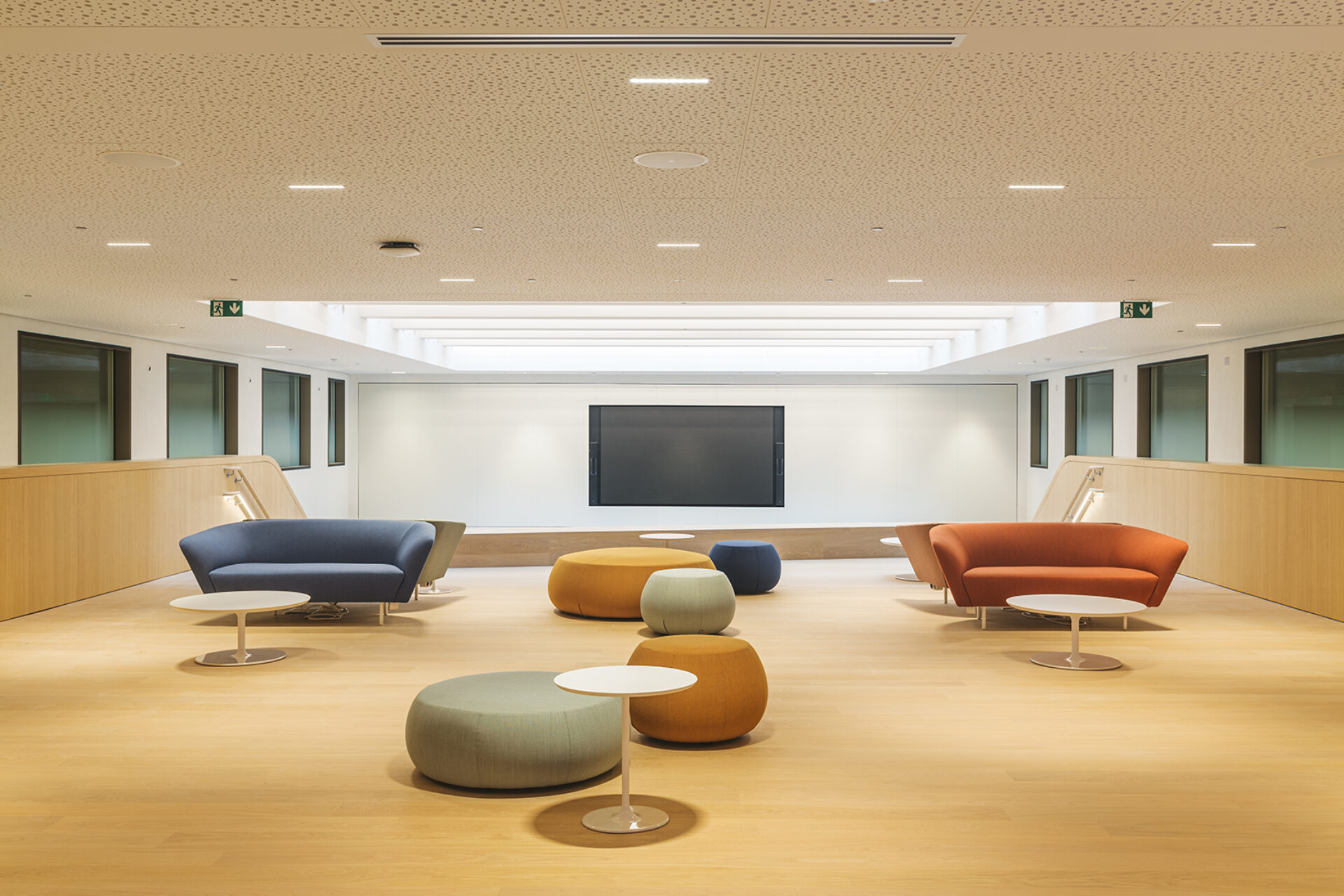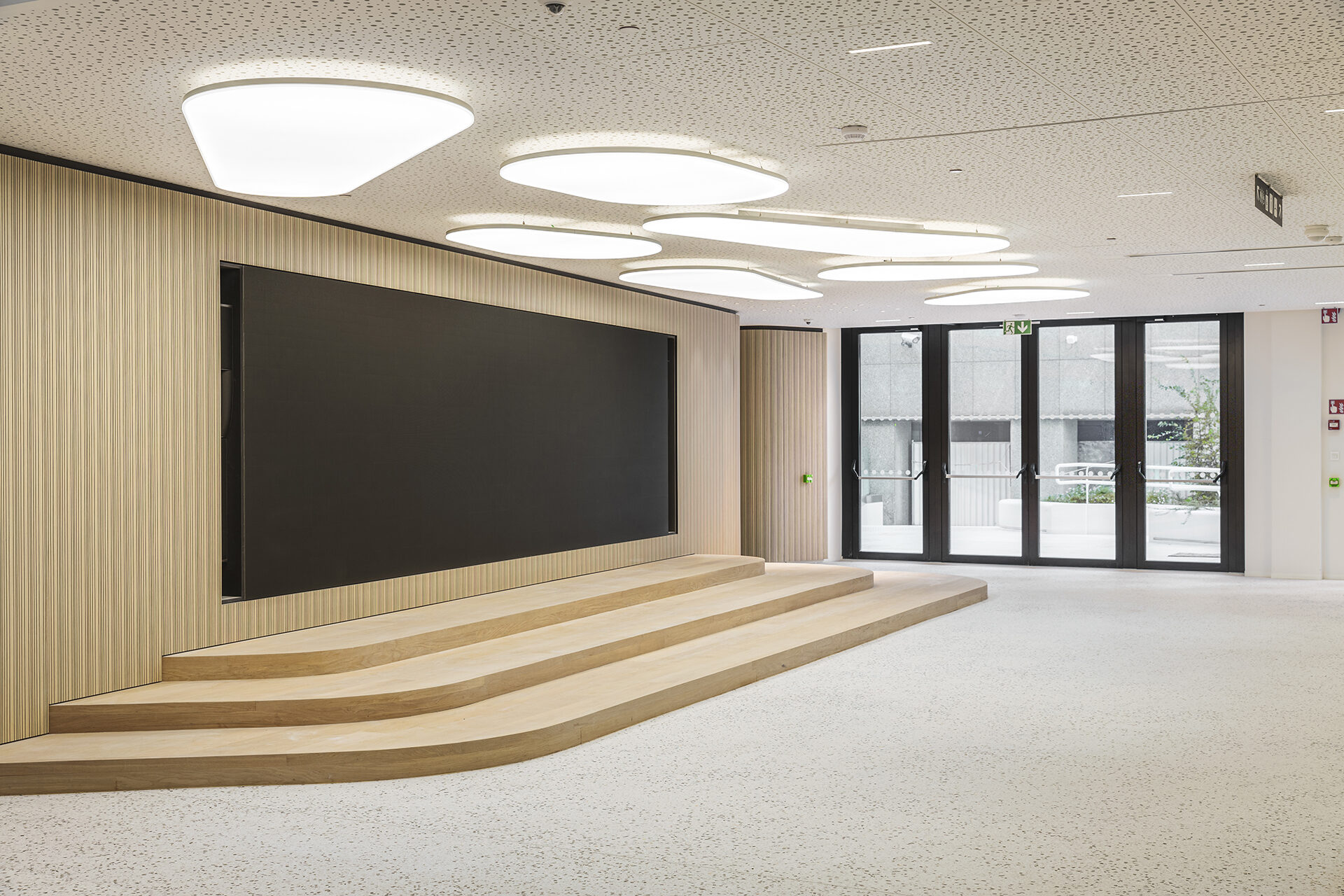a model of integration expressing the values of Europe
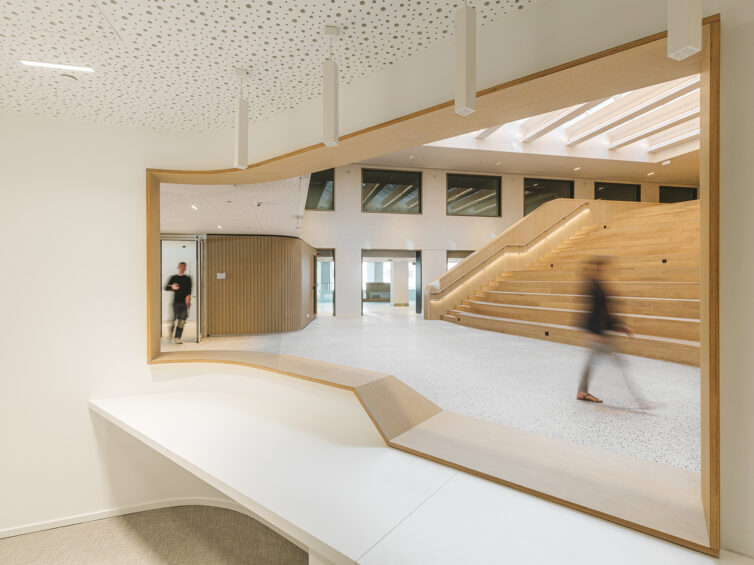
a model of integration expressing the values of Europe

The Zweig Visitor Centre, built for the European Parliament, is a project designed to welcome visitors from different nations & guests of the nations’ MEPs to showcase & exhibit the missions of the European Parliament.
The project is the result of a complex integration of architecture, interior design, & urban design, while ensuring that European values such as transparency, diversity, & inclusiveness are expressed.
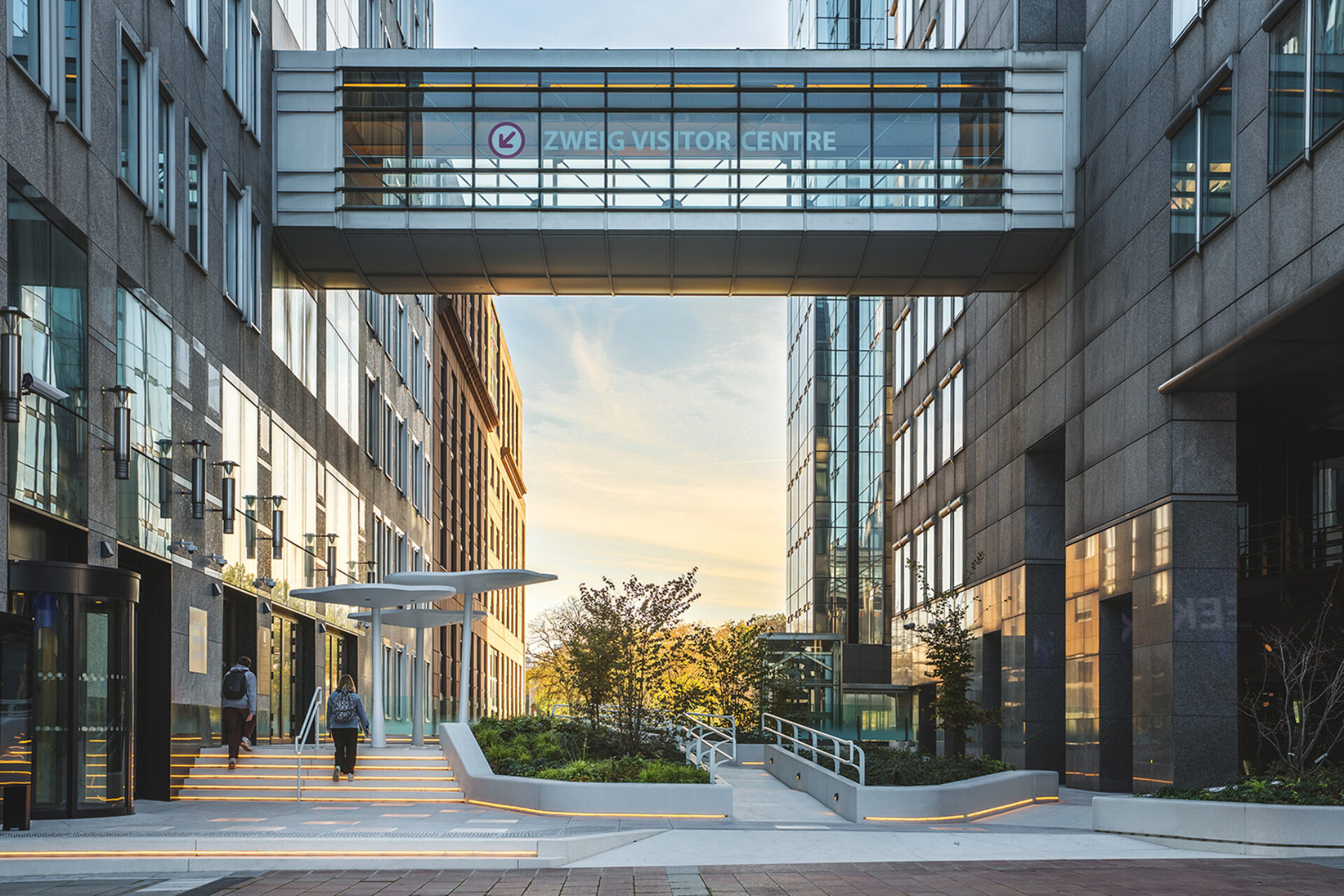
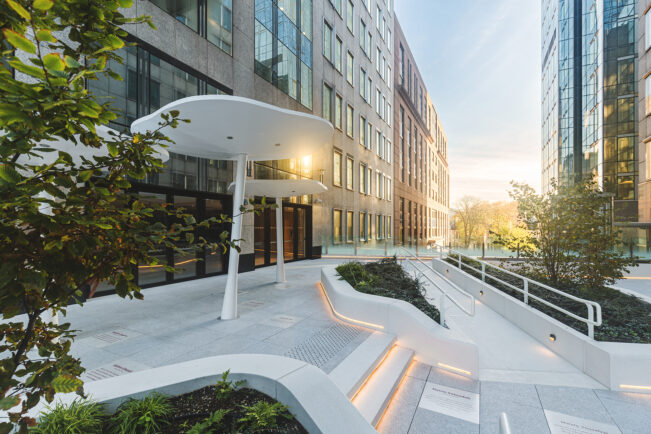
| program | conversion of lower floors of an office building into a visitor centre with agora & seminar rooms, development of the esplanade in front of the main entrance |
| client | European Parliament |
| address | rue Wiertz, n°60 • 1000 Brussels |
| building type | work |
| status | completed |
| expertises | architectureinterior architectureurban design & planningproject managementconstruction management |
| offices | brussels |
| size | 2.540 m² |
| team | • client: the European Parliament • architecture: assar • interior architecture: assar • developer: BBNE • structural engineering consultants: SWECO • fluid technologies consulting: SWECO & FI ENGINEERING • landscape designer: assar |
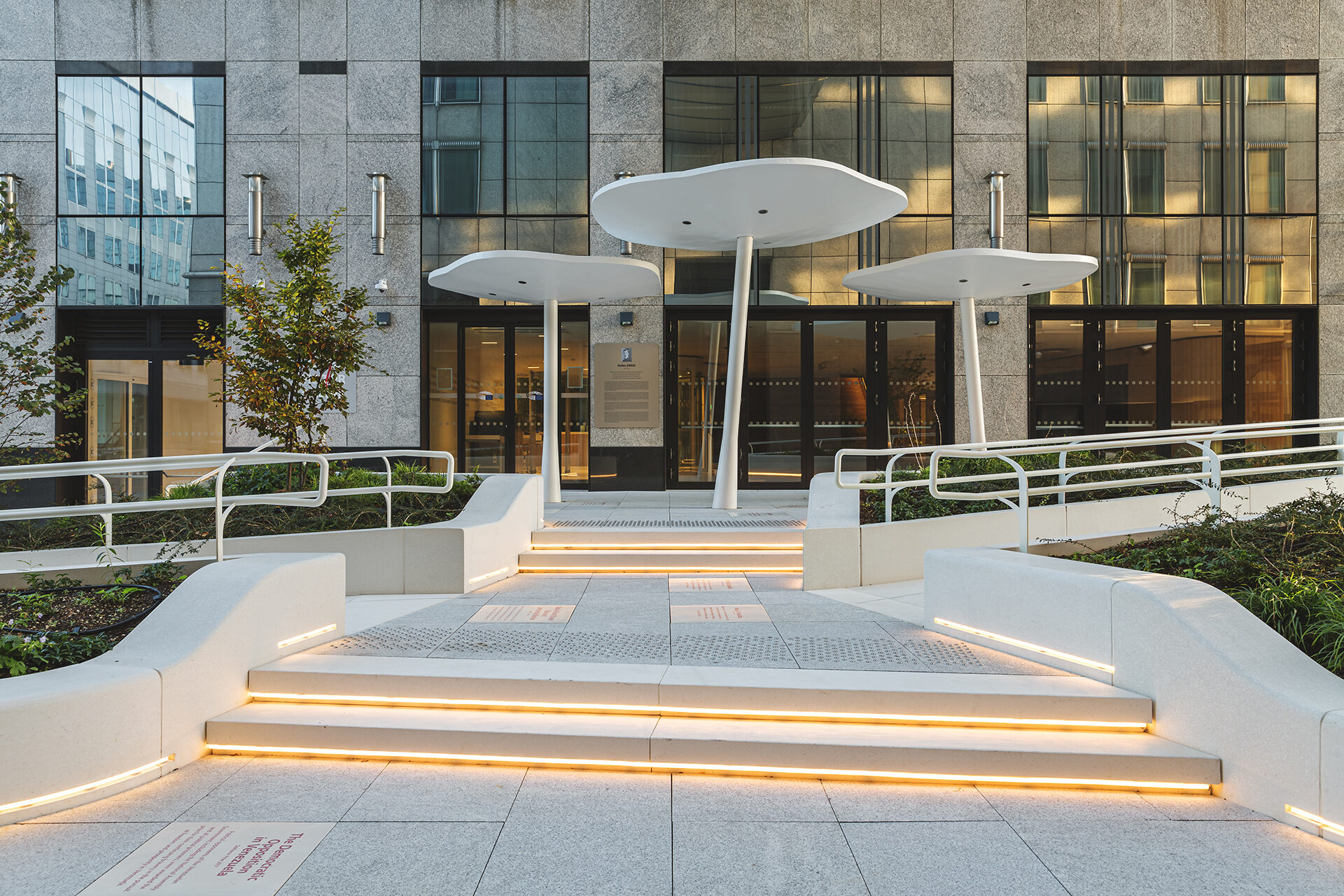
The visitors’ centre is located on an important axis of the capital linking the Leopold Park to the Royal Palace, but is also strategically and centrally located in the arrangement of the different functions of the Parliament.
The project is the starting point of the visitor’s route, which includes other nearby buildings such as the Parliamentarium, the House of European History, and the Hemicycle of the European Parliament. It serves as a communication hub, dispatching several thousand visitors each day to these sites.
The creation of a welcoming green esplanade in front of the main entrance to the building (the Sakharov Lounge) provides a welcome breath of fresh air in a mineral environment. The floor of this esplanade contains the commemorative slabs of the Sakharov prizes, hence its name.
The benefit of this new “Sakharov Lounge” space is that it provides a more intimate space, a kind of link between Leopold Park and the rest of the city, marking the entrance to the visitors’ centre by its very existence.
The project is integrated into an existing office building (Atrium building), which continued to function during the works. This created an additional level of complexity, particularly in terms of the technical equipment that had to be accommodated within the perimeter of the project works.
The work carried out is a fine example of collaboration and integration between several areas of expertise within assar, since it combines architecture, interior architecture, and urban design.
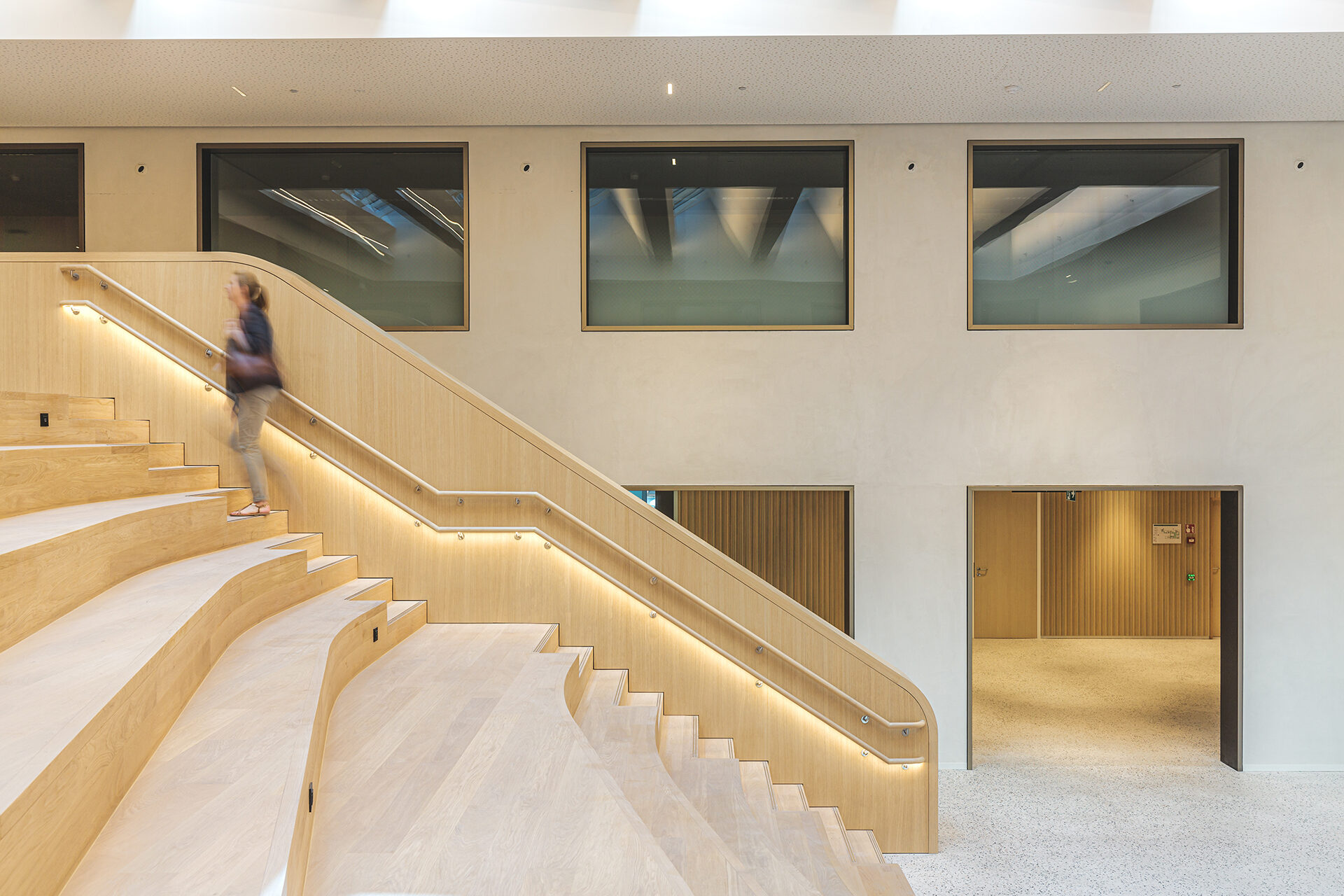
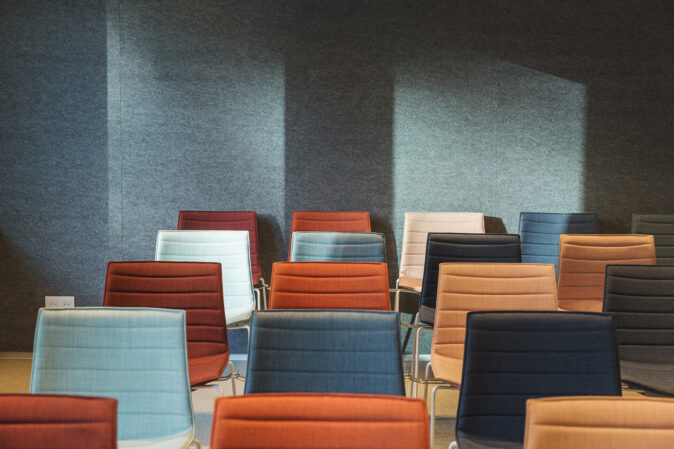
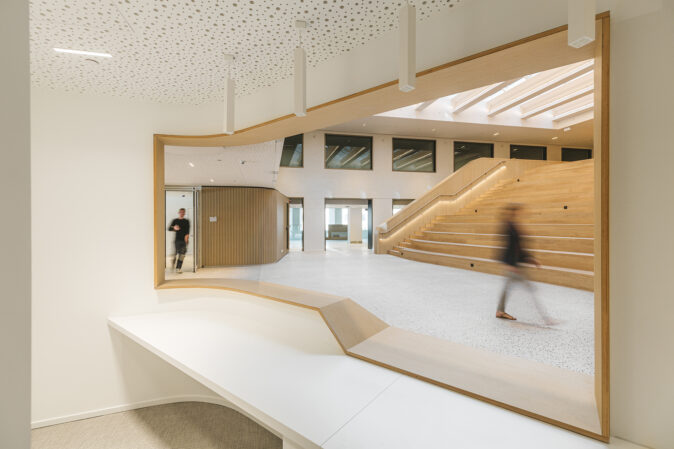
The key intervention is the covering of the existing open patio with a pitched rooflight (shed) glass roof to create a double height agora. This work on the volumes made it possible to provide a certain grace and poise that represents the functions of the European Parliament.
In addition to its aesthetic and functional added value, this intervention also resolved the problem of fire safety. At the heart of this space, bathed in natural light, is a large wooden platform (a recyclable and CO2-friendly material), which serves both as a seating area for presentations and as a staircase to a multi-purpose lounge area on level +1, finished with a brightly coloured wall.
This multi-purpose area can be used as a space for relaxation, but also as a setting for an informal meeting or small reception. It also provides access to an additional room. A large screen is installed in front of the tiers, and smaller screens have been placed in strategic locations in the multi-purpose area.
Below the stage there is a large seminar room with glass side walls and a second one at the back. These rooms can be sub-divided by sliding acoustic walls, which can be concealed in specially designed fittings. A dozen smaller seminar rooms are distributed along the façades, thereby benefiting from natural light. Finally, there are hubs for sanitary facilities, lifts, emergency staircases, and also for the additional technical equipment required to convert office space into meeting rooms.
At the rear, an area reclaimed from the neighbouring L-building is reserved for the guides, with offices and changing rooms. This is not accessible to the public.
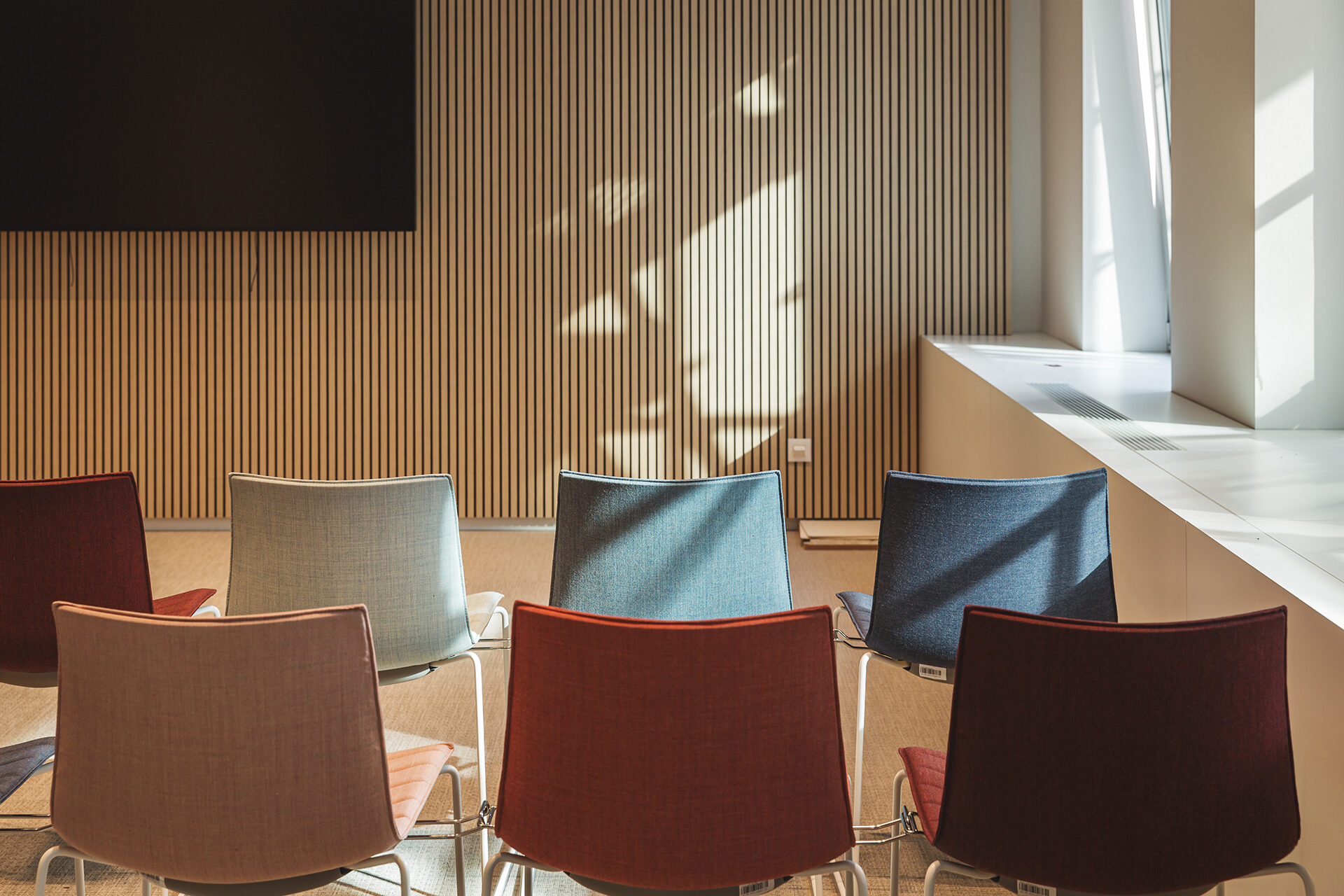
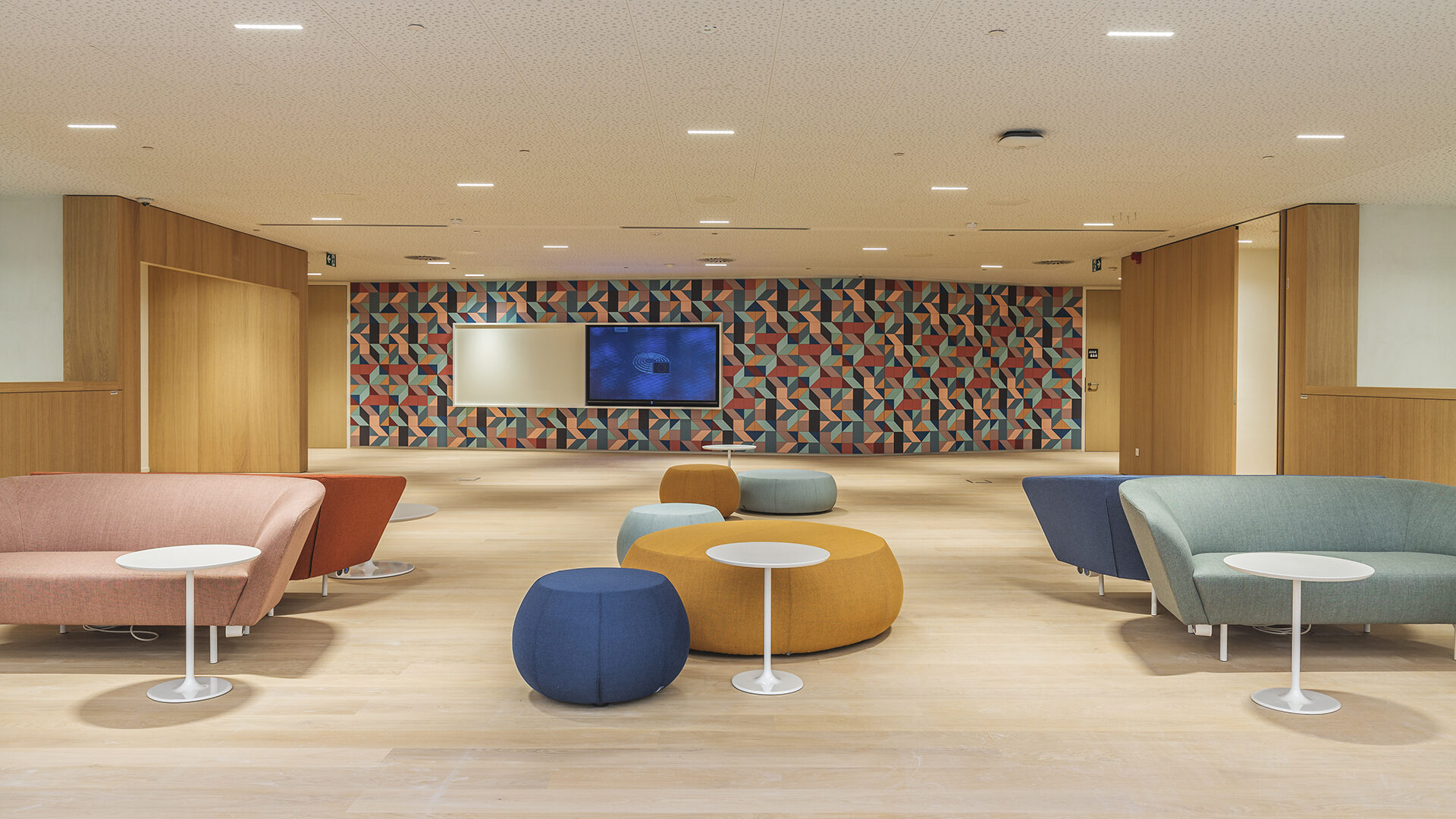
Visitors enter the agora either from the rue d’Ardenne in the basement, or from the Sakharov esplanade in front of the building’s main entrance. The design was guided by the flow of visitors, hence the work on the curves, for greater fluidity. Large white concrete planters, which also serve as benches, have been placed in line with the main flows to and from the points of interest on the visitor’s route. They provide a green breathing space while also inviting visitors to enter the building. Three elegant canopies protect visitors from the weather. The levels have been raised to match those of the interior, and the green islands are pierced by an access ramp for persons with reduced mobility, as the Parliament is committed to being an inclusive institution.
Upon entering the building, visitors first pass through an area with low ceilings where there is a security check with scanners and a special area where they can pose for photographs in front of the flags of the European States and a view of the hemicycle.
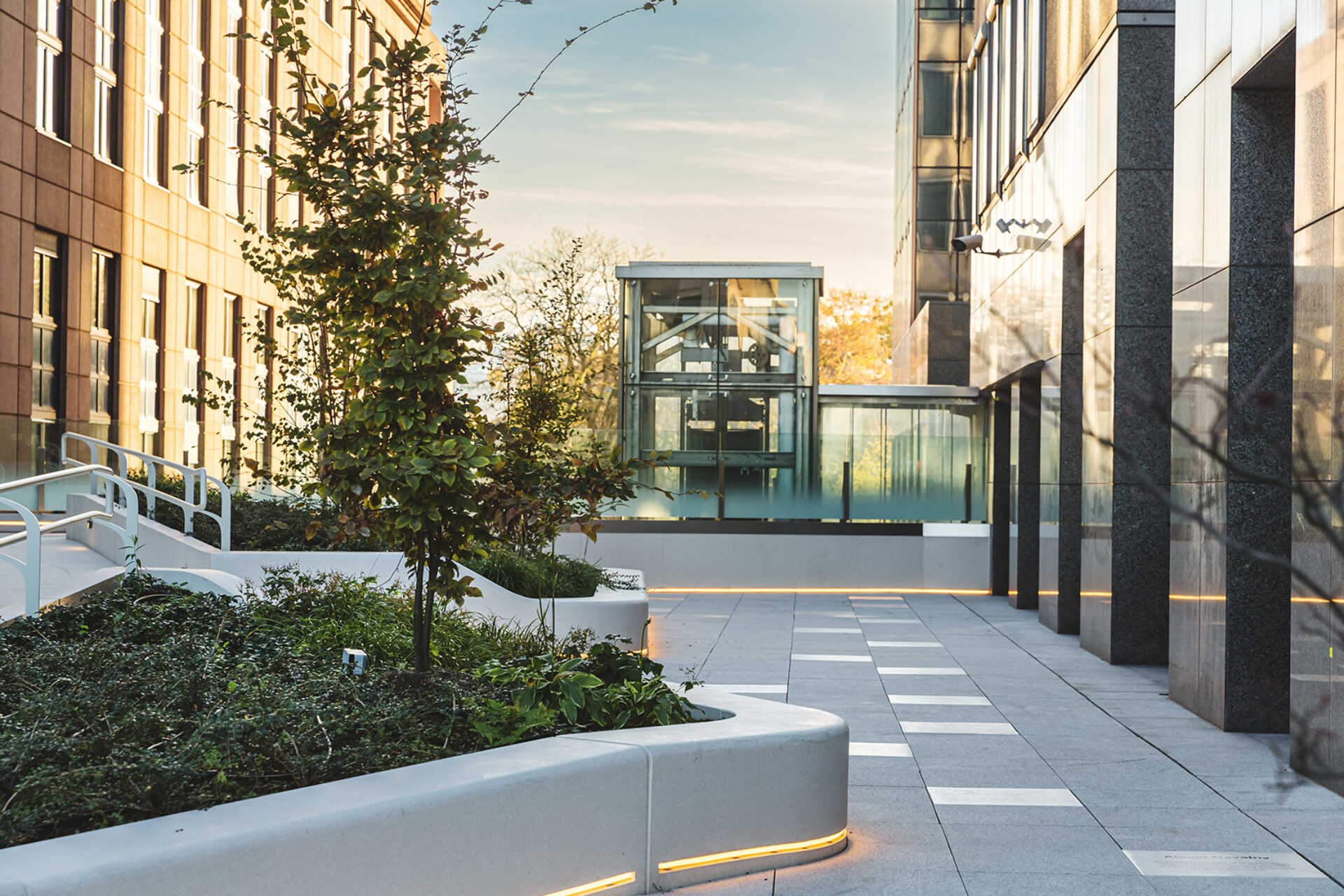
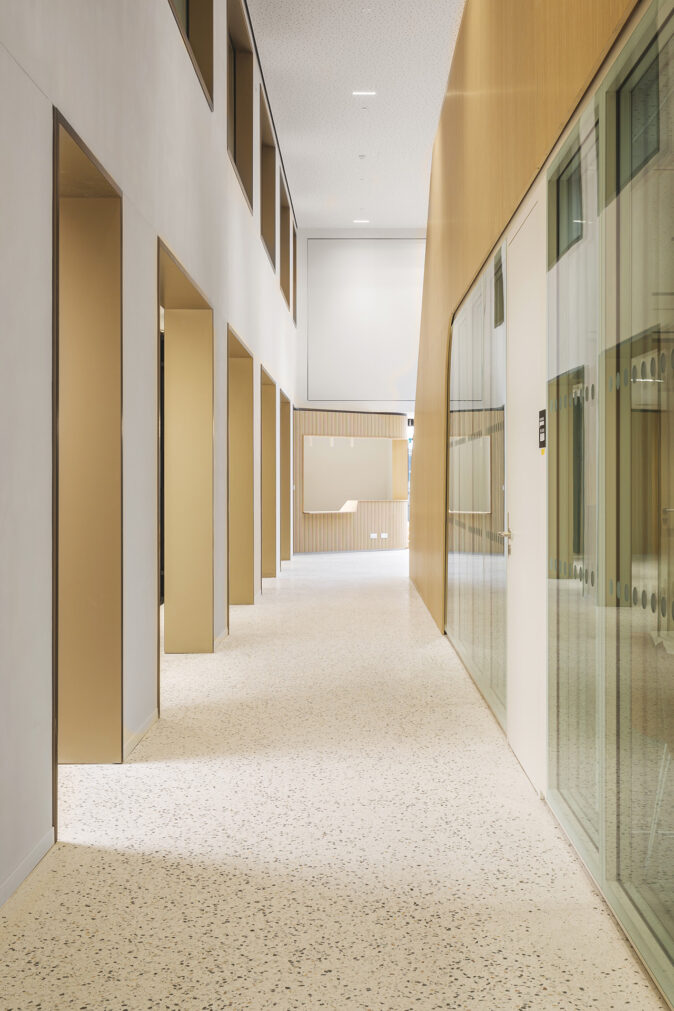
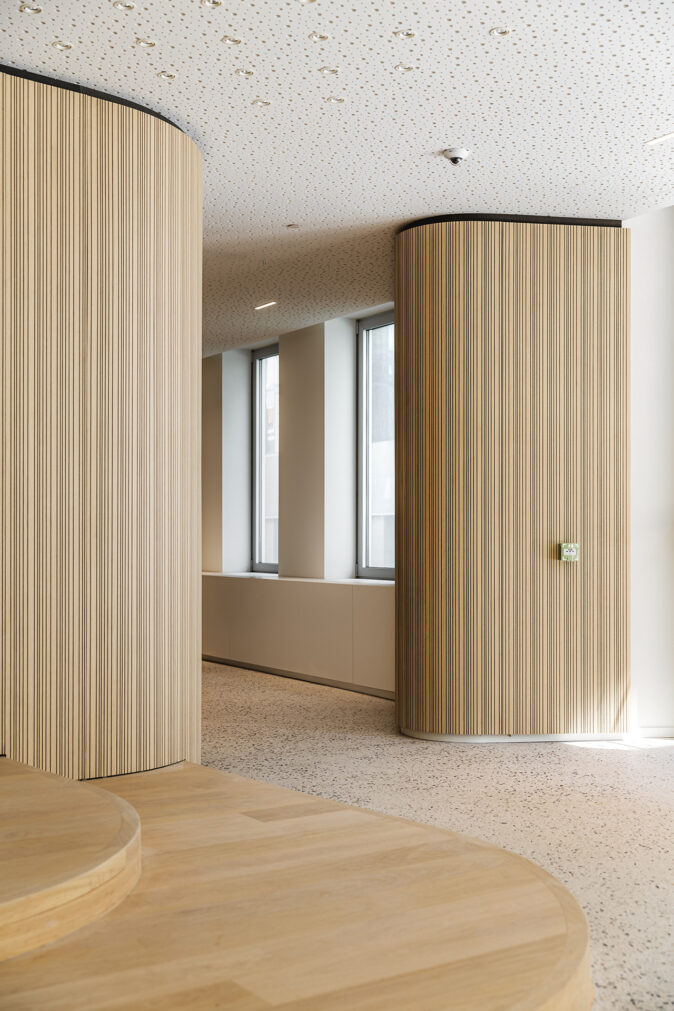
The visitor then enters the double-height agora, which is very bright, and faces the majestic wooden staging. To the right is a reception desk with cloakroom, made of light wood and curved, and to the left a similar ‘cabinet’ for the security guard. Wood proved ideal for expressing the timelessness and strength of the institution, avoiding the coldness of stone or metal. It is here that the group is given explanations by the guide before being dispatched to the various seminar rooms. The rooms are also glazed on the corridor side and allow visual contact, reflecting the transparency sought by the Parliament in its communication.
The rooms are differentiated from each other by a colourful palette evoking the diversity of countries, colours that are found both in the wall coverings and in the furniture. This also contributes to an expression of the plurality of cultures in the European space.
The sustainable aspect of the project can be seen in the choice of finishing materials, notably wood, terrazzo, and woven vinyl, but also in the integration of vegetation in the urban area, a real green setting in the esplanade.
